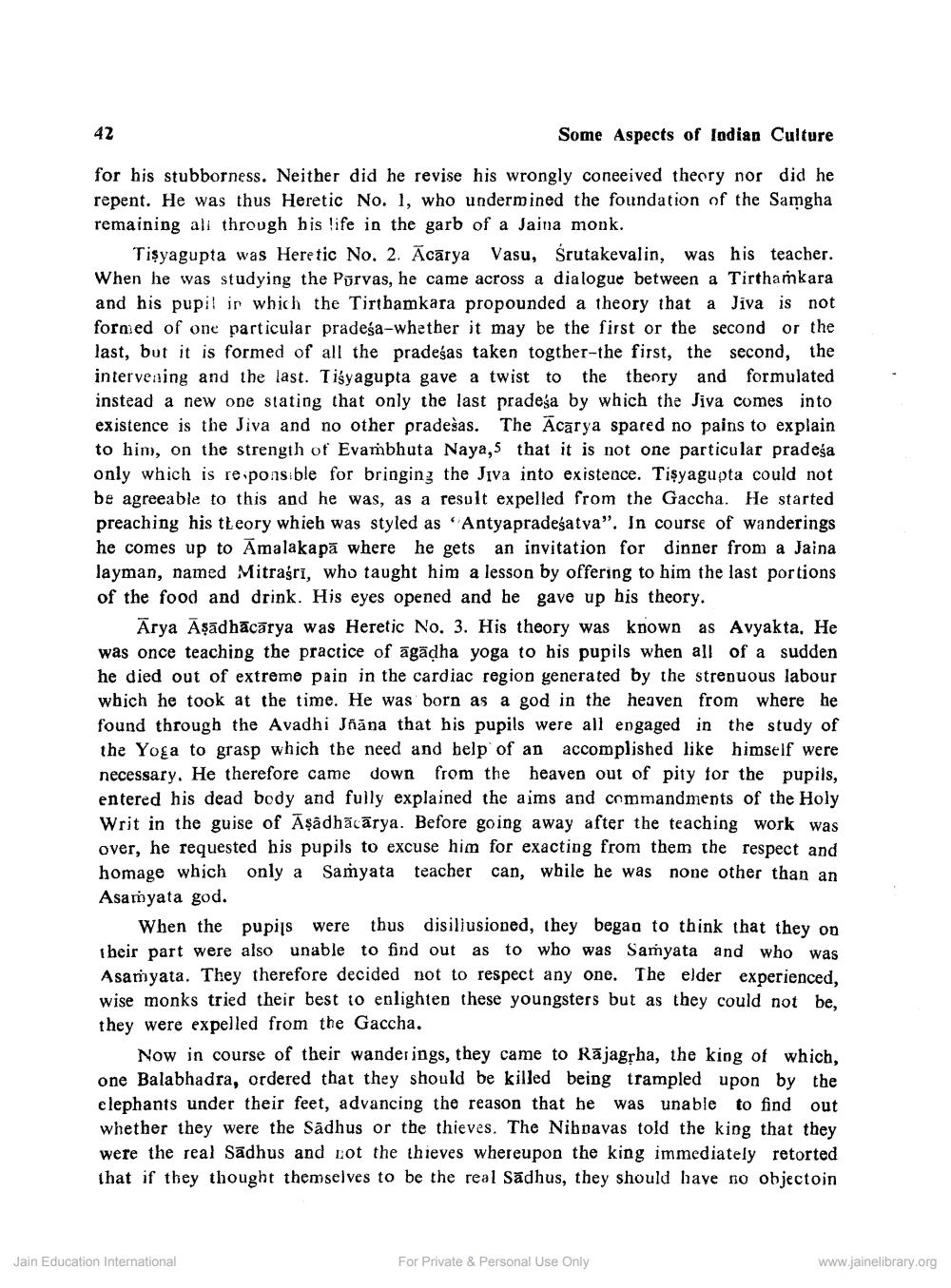________________
42
Some Aspects of Indian Culture for his stubborness. Neither did he revise his wrongly conceived theory nor did he repent. He was thus Heretic No. 1, who undermined the foundation of the Samgha remaining all through his life in the garb of a Jaina monk.
Tisyagupta was Heretic No. 2. Acarya Vasu, Śrutakevalin, was his teacher. When he was studying the Purvas, he came across a dialogue between a Tirthamkara and his pupil in which the Tirthamkara propounded a theory that a Jiva is not formed of one particular pradeśa-whether it may be the first or the second or the last, but it is formed of all the pradejas taken togther-the first, the second, the intervening and the last. Tilyagupta gave a twist to the theory and formulated instead a new one stating that only the last pradega by which the Jiva comes into existence is the Jiva and no other pradelas. The Acarya spared no pains to explain to him, on the strength of Evambhuta Naya,5 that it is not one particular pradeja only which is responsible for bringing the Jiva into existence. Tisyagupta could not be agreeable to this and he was, as a result expelled from the Gaccha. He started preaching his theory which was styled as Antyapradeśatva". In course of wanderings he comes up to Amalakapa where he gets an invitation for dinner from a Jaina layman, named Mitrairi, who taught him a lesson by offering to him the last portions of the food and drink. His eyes opened and he gave up his theory.
Arya Asadhacarya was Heretic No. 3. His theory was known as Avyakta, He was once teaching the practice of agaḍha yoga to his pupils when all of a sudden he died out of extreme pain in the cardiac region generated by the strenuous labour which he took at the time. He was born as a god in the heaven from where he found through the Avadhi Jñana that his pupils were all engaged in the study of the Yoga to grasp which the need and help of an accomplished like himself were necessary. He therefore came down down from the heaven out of pity for the pupils, entered his dead body and fully explained the aims and commandments of the Holy Writ in the guise of Așadhacarya. Before going away after the teaching work was over, he requested his pupils to excuse him for exacting from them the respect and homage which only a Samyata teacher can, while he was none other than an Asamyata god.
When the pupils were thus disillusioned, they began to think that they on their part were also unable to find out as to who was Samyata and who was Asamyata. They therefore decided not to respect any one. The elder experienced, wise monks tried their best to enlighten these youngsters but as they could not be, they were expelled from the Gaccha.
Now in course of their wanderings, they came to Rajagṛha, the king of which, one Balabhadra, ordered that they should be killed being trampled upon by the elephants under their feet, advancing the reason that he was unable to find out whether they were the Sadhus or the thieves. The Nihnavas told the king that they were the real Sadhus and not the thieves whereupon the king immediately retorted that if they thought themselves to be the real Sadhus, they should have no objectoin
Jain Education International
For Private & Personal Use Only
www.jainelibrary.org




